Bananas are one of the most popular fruits. Bananas are not difficult to grow when planted in areas with abundant sun, but Banana plant problems are bound to arise anyway. The problems in growing Bananas are so numerous that only a few dares carry out this challenging task. No matter how much you experience gardening, the Banana tree will continue to challenge you with health issues. You can solve some of these issues easily, and some are difficult.
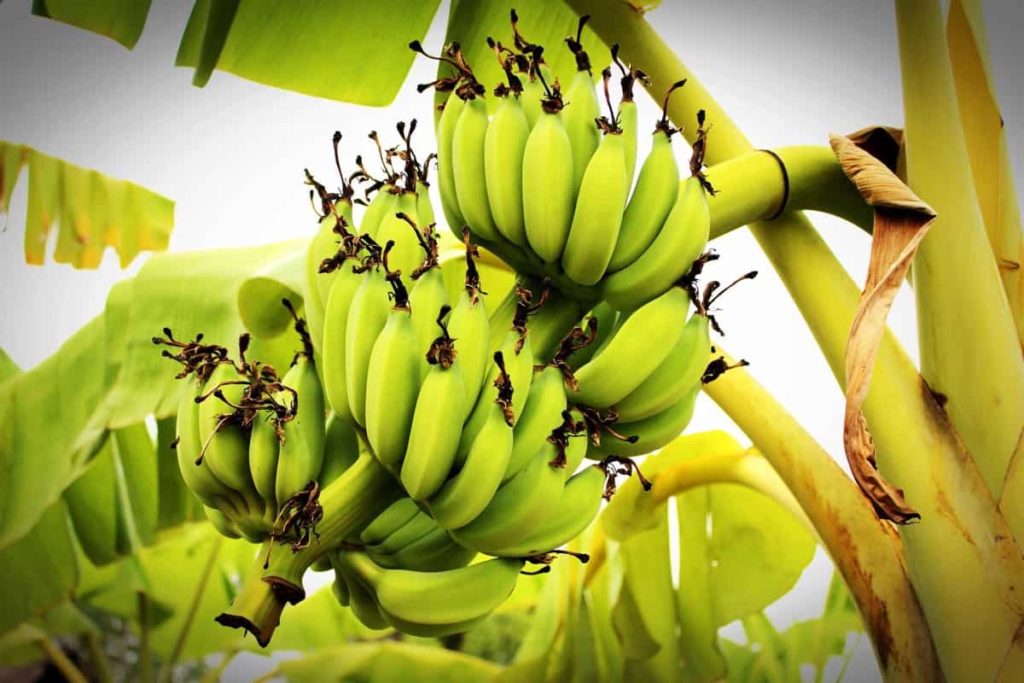
16 common Banana tree/plant problems
Banana trees are not fruiting
Lack of fruits is one of the growing problems of Bananas, and the reasons are different. For one, you may have planted a type of plant that doesn’t bear fruit. Another reason could be that the tree is too small for fruit. Both soil and temperature have a significant impact on whether the Banana tree will grow or not. Also, pruning the wrong stem can damage the tree and prevent it from bearing fruit.
Solution – To fix this problem, you must list possible causes that prevent the Banana tree from flourishing and fix them one by one. Check if your Banana tree is not one of the varieties of pink velvet Banana, dwarf Banana, or red Banana. These species are mainly grown to produce magnificent flowers.
Banana trees grow well in rich soil and require a lot of plant food supplements. You should regularly apply compost, organic materials, and aged manure during the growing season to keep the tree healthy and encourage fruits. When pruning a Banana tree in the fall, prune only the old trunks. Soil pH also plays a role in the tree’s ability to bear fruit or not. Banana trees prefer a pH between 5.5 and 7.0, which is either neutral or slightly acidic. The tree needs warm temperatures; if the temperature drops to the low 16°C, the tree is not producing any fruit.
Banana leaves turn yellow
Lack of nutrients
Yellow leaves often indicate a deficiency of certain nutrients in the soil. Soil testing will reveal the exact needs of nutrients. A Banana tree that lacks potassium will show the margins or tips of yellow leaves. The lack of magnesium shows yellow in the middle of the leaf parallel to the central vein and leaf edge.
Nitrogen deficiency will first cause the old leaves to turn normal yellow, while the lack of sulfur causes new leaves to turn yellow. If you see thin yellow stripes perpendicular to the main vein, your Banana tree may lack iron, zinc, manganese, or copper.
Solution – Too much of a particular nutrient can also cause problems in Banana trees. The best way to properly balance soil nutrients is to test the soil and only fertilize with deficient nutrients. If soil testing shows no deficiency, soil pH may need to be adjusted, soil drainage may be slow, or you may give more water. Too much water prevents the roots from getting nutrients from the soil.
In case you missed it: How to Prepare the Soil for Banana Plants: Best Soil Mix, pH, Compost, and Recipe
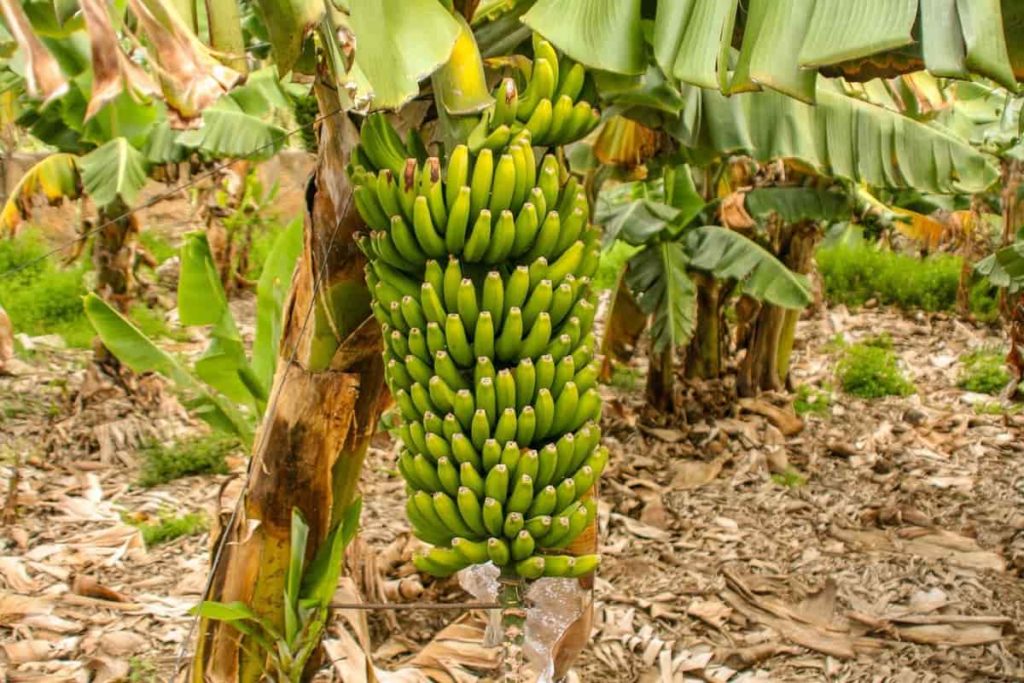
Fusarium wilt
In addition to lack of nutrition, one of the most common afflictions that cause yellow leaves in Banana trees is the fusarium wilt, caused by the fungus. This fungus enters through the roots and grows inside channels that don’t transport water and nutrients throughout the plant. The plant is starved, and the leaves turn yellow and die.
Solution – Unfortunately, there is no known treatment for wilting. The best way to deal with this soil-produced disease is by planting resistant Banana tree cultivars.
Mosaic virus
The mosaic virus causes yellow streaks in Banana leaves perpendicular to the vein of the central leaf. Mosaic viruses in Bananas usually do not cause the leaves to become curled or wilted. It is also possible that only a few Banana leaves will turn yellow with this virus instead of all of them. In this case, the Banana tree can survive despite minor infections.
Solution – There is no cure for plant viruses, so infected plants should be removed and discarded to protect nearby plants.
Bananas with cracked skin
If moisture reaches 90% around the tree during the fruiting, the skin of the Bananas may split. Another reason could be high temperatures. If temperatures rise above 32°C and remain there, the fruits will burst open everywhere.
Solution – To solve this problem, you must be vigilant and watch the weather forecast. If you expect a heatwave, you can move on and harvest your Bananas before damaging them with excessive heat. During the fruiting season, improve the airflow around the Banana tree. Humidity may increase after rain, so better circulation will keep moisture levels low. The best time to harvest Banana fruit is when the skin is green. If the skin turns yellow-green, they are already ripening and should be collected immediately.
Banana leaf tips turn brown
Sunburn
Banana plants grow best in tropics and subtropics but can also suffer sunburn. Sunny days can also cause the leaf to burn and brown. Keeping the tree in a partially shady state can help prevent leaves from browning with sunburn.
Cold
Tropical Banana trees don’t like cold spells or frosts. Cold weather can cause leaves to be brown on tips. Growing Banana trees in tropical and subtropical climates is a good way to prevent browning due to cold weather.
Irregular watering
Water is the key to keeping your Banana tree healthy, and can cause too much or too little can cause browning on the tips of the leaves. When the soil dries up, the leaves will turn yellow and brown quickly on the tips as the water cannot be spread effectively. The solution is as simple as during the summer and winters when there is less rainfall. When there is more water on the Banana tree, it can also cause the leaves to brown. Brown areas will usually be seen near the center of the leaves instead of tips, but the leaf will still die.
In case you missed it: Guide to Growing Red Banana in Home Garden: Planting and Care
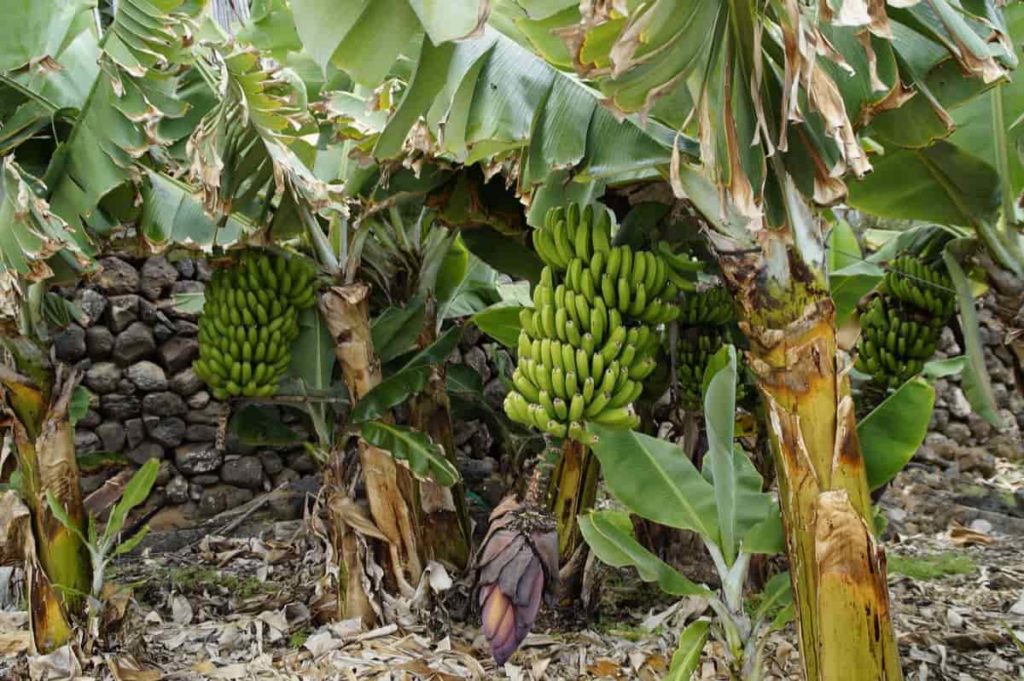
Nutrients
Banana trees that lack a vital nutrient can cause leaves to brown. Nitrogen is a possible cause of browning leaves due to a lack of nutrients, so an immediate dose of liquid nitrogen fertilizer can help the tree recover.
Solution
While underwatering can cause brown leaves, deep watering will keep your Banana tree happy and prevent this problem. Instead of short, shallow watering daily, use your garden’s hose and give your Banana tree full water every few days. When the leaves start to wilt, look and make sure you water your tree well. It is better to water in the morning before the harsh sun rises to avoid sunburn.
Remove any brown leaves to keep your Banana tree healthy and provide space and light for new leaves to grow. Giving organic liquid fertilizer to your Banana tree in spring is a gentle way to ensure that the tree has a lot of nutrients. Adding pelleted chicken manure is also a great way to give your tree a range of nutrients while growing quickly over the warmer months.
Curling and folding Banana leaves
Banana plant leaves fold due to inappropriate water, sunlight, and nutrients. Usually, when the soil is dry, water Banana plants and provide full sun, quality fertilizer, and a warm and humid environment.
Inappropriate water
Curling is more common with too little water. The Banana plant leaves the curl to maintain moisture when given less water. The leaves will dry, brown, and fall if left for too long. Underwater is common in a hot and dry climate, where soil moisture can evaporate in a few hours. If you find out that your Banana plant has bad drainage or collapsed soil, you should modify it with compost and mulch.
Solution – Only water Banana plants when their soil is dry for the best results. Banana plants planted in poor drainage soil can be modified by planting in mounds. It is especially useful in clay soil.
Lack of sunlight
Banana plants prefer 6 hours of sunlight to photosynthesize and grow properly. Banana plant leaves are often curled when they do not get enough sunlight to photosynthesize. Another sign of poor sunlight and photosynthesis is yellow leaves due to a lack of chlorophyll.
Solution – Compared to other fruit trees, sunlight is particularly important for Banana plants as they grow from pups within nine months. This rapid growth demands high amounts of sunlight and nutrients.
Banana plant leaves drooping or bending
There are similar reasons for drooping and bending, and the most common problem is dehydration. Banana plants are hungry feeders; without water, they will not survive. Often once the leaves start drooping over the midribs, the plant will not recover and may even die.
Solution – The Banana leaves bend when the plant does not get proper water. The Banana plant thrives if you give it enough water. Consciously water your Banana plant, and be sure not to apply too much water. Do not let the soil dry. Do not let your Banana tree-sit in water-filled conditions because it can cause root rot.
Banana plants perform well with regular fertilizer additions during the growing season. They will use all the nutrients in potting mix or even in the surrounding soil, requiring additional feeding to perform well.
Solution – In the growing season, you would like to add a balanced fertilizer dose every time your plant is watered. If this is not possible, you should feed the plant at least once a month. Feed your Banana plant with manure that contains adequate amounts of potassium.
In case you missed it: Best Fertilizer for Banana Plants: Schedule, Organic, Natural, and Npk
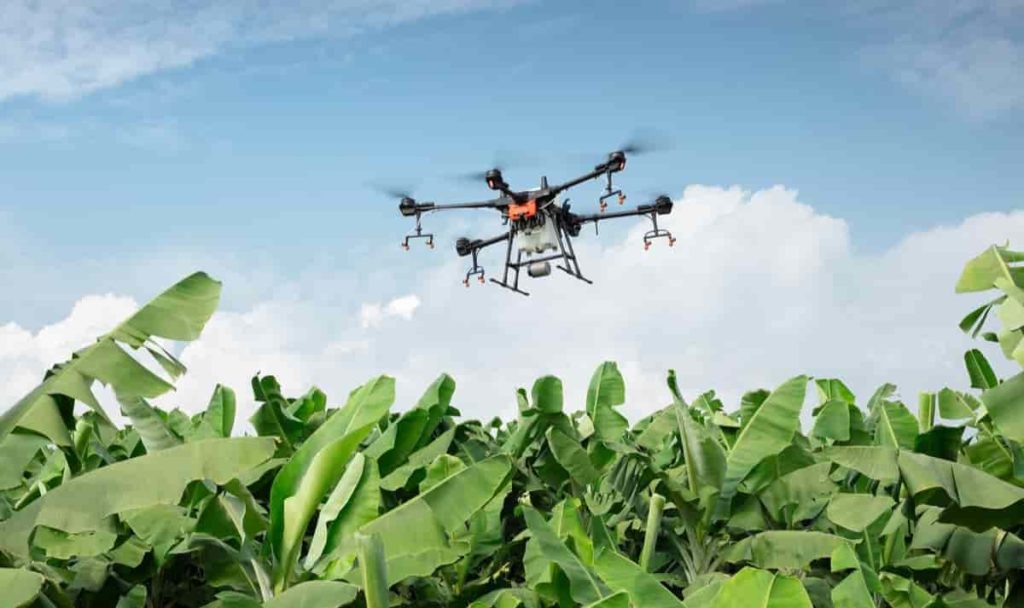
Banana plant leaves splitting
Naturally
If you look at your Banana plant in its natural environment, you will likely see its leaves cracked. They are designed to split, so they do not become a sail when the wind blows. The leaves burst, and the wind blows through them, leaving the plant straight instead of blowing it.
Lack of humidity
The leaves split in the middle may be because the humidity is low.
Solution -One of the simplest ways to overcome moisture deficiency is to place trays under the plant and keep it full of water. This will help keep your Banana plant’s area humid, and you should see less splitting.
General old age
As Banana plants grow older, some of their leaves are split.
Solution – You can prune the split leaves if they bother you.
Pests
Nematodes
The nematode is a common worm of the Banana plant. Several different types of nematodes like Bananas as much as we do.
Solution – Commercial farmers apply nematicides to protect the crop when planted. Otherwise, the soil must be cleaned, plowed, exposed to the sun, and left fallow for up to three years.
Thrips
Banana rust thrips, as its name suggests, stain the peel, causing it to split and expose the flesh that begins to rot.
Solution – Insecticidal dust or Dieldrin spray can control the thrips, which pupate in the soil. Additional pesticides are also used along with polyethylene bagging to control the thrips on commercial farms.
Banana aphid
Deformed plants with curled leaves. If the infection is severe, Galls may form on leaves. The colonies of aphids are usually present in the plant crown base on pseudostem or between the sheaths of the outer leaves.
Solution – Insecticidal soaps can help control the aphid population; the infected plants from the top of the bunch should be removed and destroyed to prevent spread.
In case you missed it: Banana Planting Questions and Answers – (FAQs)
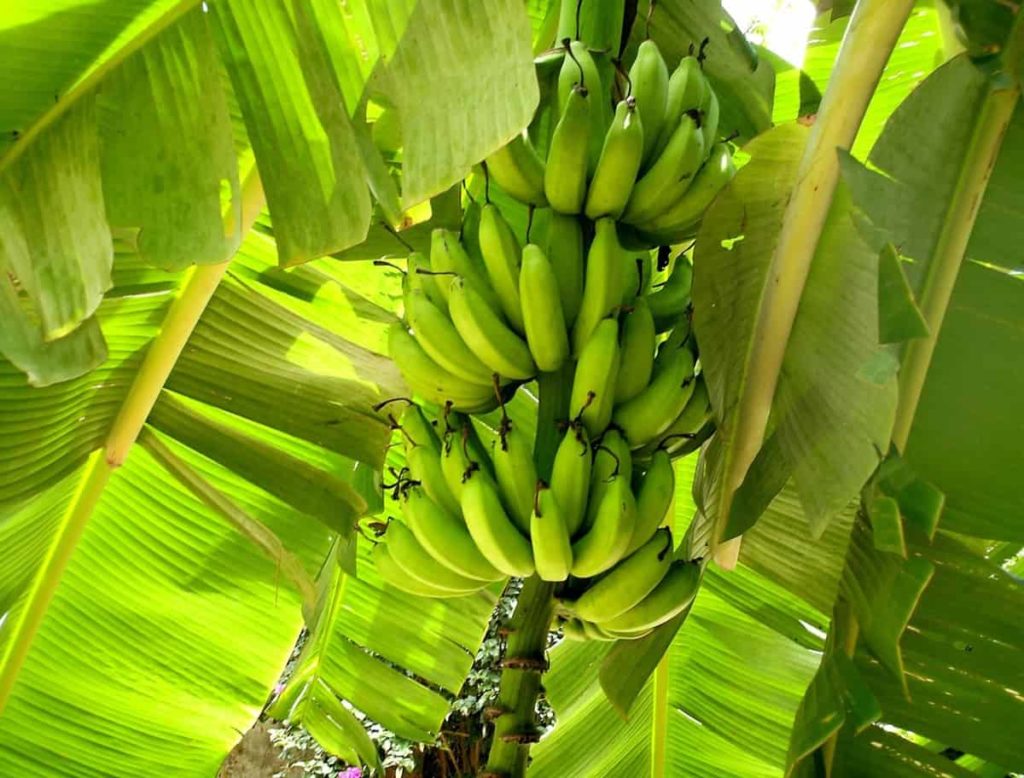
Coconut scale
Small, flat, white scales, usually under leaves, can also be attached to the petiole, peduncles, and fruit. Plant tissue is getting colorless and yellow.
Solution – Biological control is the best way to manage scales, and lady beetles provide the most effective protection.
Diseases
Anthracnose
Brown spots on fruit peel and black lesions on green fruit. Wet conditions favor the spread of the disease. Spread by rain through plants or Banana bunches.
Solution – Commercially produced fruit should be washed and dipped in fungicides before shipping. Remove flower parts that can shelter fungus.
Black Sigatoka
Red/brown flecks or spots under leaves. Dark or yellow border and gray-centered spots.
Solution – Increase plant distance to improve air circulation and reduce moisture. You should remove leaves with mature spots.
Cordana leaf spot
Initially, the lower leaves show oval-shaped yellow or pale-brown spots near the leaf margins. As the disease progresses, the central dead brown area of spots is covered with concentric zonation surrounded by a yellow halo. Individual locations can work together to form large necrotic areas.
Solution – Remove and burn all affected leaves; if the disease is severe, use copper-based fungicides.
Panama disease
The fungi affect the roots, blocking the plant’s flow of nutrients and water. Leaves wilt and death of entire canopy.
Solution – Use disease-free plantation material. There is currently no effective treatment once plants are affected.
In case you missed it: Banana Growing Tips, Techniques, Ideas, and Secrets
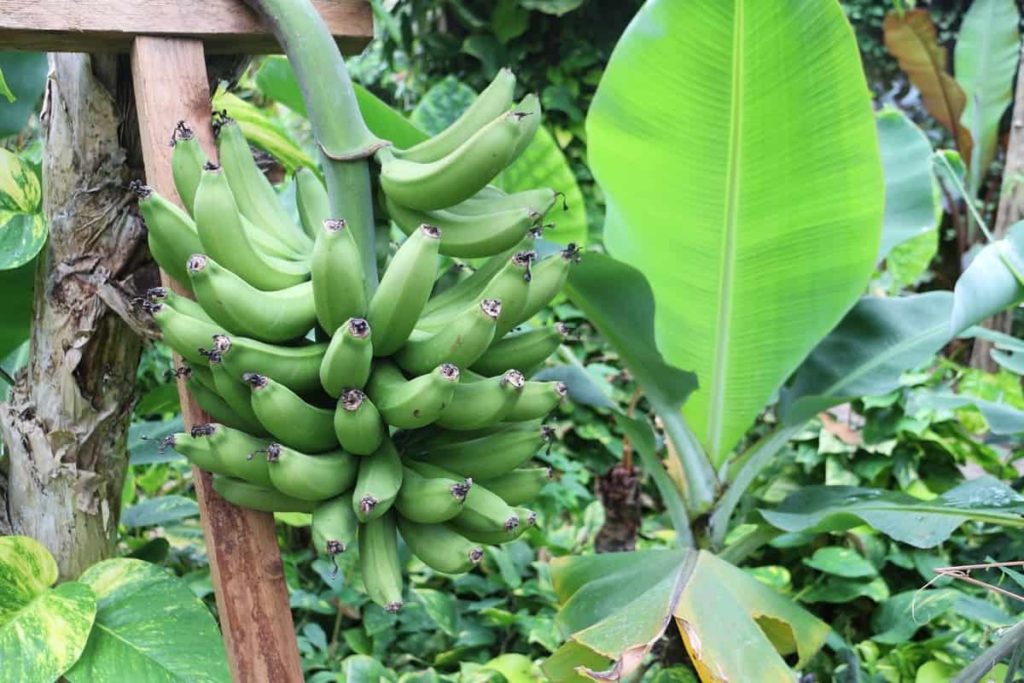
Banana mosaic
Chlorotic mottling or stripes on leaves. Spoiled fruit that can contain chlorotic streaks or mottling and distorted leaves.
Solution – Remove sensitive host plants from the plantation and plant virus-free material.
Conclusion
Banana plants are an asset to any house and yard, or even when grown directly in the garden, although they need some care to perform well. Prevention is always easier than treating a condition like any plant, and the Banana plant is no different. Having good watering daily will give you a pleasant, healthy Banana plant. This article describes some of the most common Banana problems and how to fix them.
- Broccoli Seed Germination and Selection
- Asparagus Seed Germination and Variety Selection
- Seasonal Flower Gardening: Best Practices for Spring, Summer, Fall, and Winter
- How to Grow Hibiscus from Flower
- Plantation Ideas for Home Decoration: A Beginners Guide
- Flower Garden Designs and Layouts for Beginners
- Planting and Spacing Techniques in Papaya: A Beginner’s Guide
- Growing Gold: Essential Techniques for Planting Pineapples
- How to Make Kalanchoe Plant Bushy: Home Remedies and Solutions
- 11 Reasons Why Your Gardenia is Not Blooming: Home Remedies and Solutions
- Eco Elegance: The Guide to Designing a Drought-Tolerant Landscape
- Gardening on a Slope: Strategies for Hillside Landscaping
- Nourish and Flourish: Top Organic Mulches for Thriving House Plants
- Everything You Want to Know about Indian Mogra Flower: Discover Uses and Growing
- Green Thumb Success: Expert Tips for Cultivating Greenhouse Pumpkins All Year Round
- Maximize Growth & Flavor: The Ultimate Guide to Companion Planting in Herb Gardens
- How to Control Rhododendron Problems Naturally: Home Remedies and Organic Ways to Fix Them
- Natural Magic: The Remarkable Benefits of Cinnamon for Plants
- Best Steps to Revive Dying Tulip with Natural and Organic Treatment
- 10 Reasons Why Your Angel Trumpet is Not Blooming: Remedies and Treatment
- How to Fix Periwinkle Leaf and Flower-Related Problems: Natural Remedies and Solutions
- How to Fix Zinnias Leaf and Flower Problems: Discover Natural and Home Remedies
- Organic Steps to Induce Lemon Tree Flowers: A Comprehensive Guide
- Bloom Booster: Crafting the Perfect Homemade Bougainvillea Fertilizer
- Optimizing Growth: A Guide to Applying NPK Fertilizer for Potted Plants
- 10 Best Homemade Fertilizers for Rubber Plant: DIY Recipes and Application Method
- How to Boost Female Pumpkin Flowers: Effective Steps for More Flowers and High Yields
- Transform Your Indoor Garden: Top Benefits of Pink Salt for Houseplants
- 10 Best Homemade Fertilizers for Peacock Plants (Calathea): Easy DIY Guide
- Unlock Blooms: 9 Reasons Why Your Potted Chrysanthemum is Not Blooming
- 8 Reasons Why Your Potted Hibiscus is Not Blooming: Fix it with Simple Solutions
- Unlock Blooms: 9 Key Reasons Your Potted Frangipani Won’t Flower
- 10 Reasons Why Is My Ice Plant Not Blooming: Remedies and Treatment
- 10 Reasons Why My Potted Hydrangea Not Blooming: Treatment and Remedies
- 10 Reasons Why is My Wisteria Not Blooming: Remedies and Treatment
- 10 Reasons Why is My Goldfish Plant Not Blooming: Remedies and Treatment